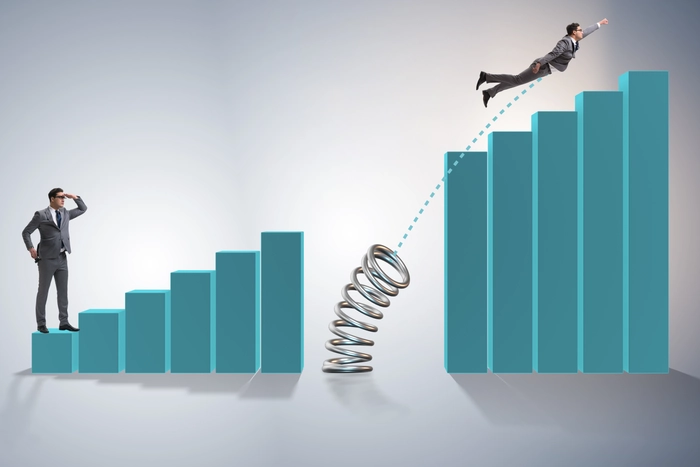
Welcome to our blog post on strategies to improve running economy! In this article, we will explore various techniques and training methods that can help runners become more efficient and economical in their running form. Whether you're a beginner or a seasoned runner, you'll find valuable tips and insights to enhance your performance and reduce the risk of injury. Join us as we delve into the science and practical application of improving running economy.
Understanding Running Economy
Running economy refers to the energy cost of running at a particular speed. It is a measure of how efficiently a runner uses oxygen and energy to maintain a certain pace. In simpler terms, it is the ability to cover a given distance with the least amount of energy expenditure.
The Importance of Running Economy in Performance
Improving running economy is crucial for runners as it directly impacts t heir performance. A more efficient running economy allows runners to maintain higher speeds for longer durations, delay the onset of fatigue, and reduce the risk of injury. By enhancing running economy, runners can achieve better race times and overall running performance.
Biomechanical Factors Affecting Running Economy
Foot Strike Pattern
The foot strike pattern, which refers to how the foot makes contact with the ground during running, plays a significant role in running economy. Research suggests that a midfoot or forefoot strike pattern is associated with better running economy compared to a heel strike pattern.
Stride Length and Frequency
The length and frequency of a runner's strides also impact running economy. Finding the optimal balance between stride length and frequency can help reduce energy expenditure while maintaining speed.
Arm Swing and Posture
The movement of the arms and overall posture can influence running economy. Proper arm swing and posture can help in maintaining balance, reducing unnecessary energy wastage, and improving overall efficiency.
Training Strategies for Improving Running Economy
Interval Training
Interval training involves alternating between high-intensity bursts of speed and periods of lower-intensity recovery. This type of training has been shown to improve running economy by enhancing cardiovascular fitness and increasing the body's ability to utilize oxygen.
Hill Training
Incorporating hill training into a running routine can also improve running economy. Running uphill challenges the muscles and cardiovascular system, leading to enhanced strength and endurance, which can translate to better running economy on flat terrain.
Strength Training for Runners
Strength training, particularly focusing on the lower body and core muscles, can contribute to improved running economy. Building strength in these areas can help runners maintain proper form and reduce energy expenditure during running.
Running Form and Technique
Proper Foot Strike and Landing
Focusing on a proper foot strike and landing can help improve running economy. This includes landing lightly on the feet, reducing braking forces, and maintaining a consistent and efficient stride.
Efficient Arm Swing and Posture
Conscious efforts to maintain an efficient arm swing and posture while running can contribute to better running economy. Keeping the arms relaxed and swinging naturally, along with maintaining an upright posture, can help reduce unnecessary energy expenditure.
Breathing Techniques
Practicing proper breathing techniques, such as rhythmic breathing patterns, can aid in improving running economy. Efficient oxygen intake and carbon dioxide expulsion can contribute to better overall running performance.
Nutrition and Hydration for Improved Running Economy
Prerun Fueling
Consuming a balanced meal or snack before a run can provide the necessary energy for improved running economy. Carbohydrates, in particular, can fuel the muscles and enhance performance.
Hydration Strategies During Running
Staying properly hydrated during running is essential for maintaining running economy. Dehydration can lead to decreased performance and increased energy expenditure.
Postrun Recovery Nutrition
Consuming a combination of carbohydrates and protein after a run can aid in muscle recovery and replenish energy stores, ultimately contributing to improved running economy.
Rest and Recovery for Enhanced Running Economy
Importance of Rest in Improving Performance
Incorporating rest days into a training schedule is crucial for improving running economy. Adequate rest allows the body to recover, adapt to training stress, and perform optimally.
Recovery Techniques for Runners
Utilizing recovery techniques such as foam rolling, stretching, and massage can help in maintaining optimal muscle function and improving running economy.
Sleep and Its Impact on Running Economy
Quality sleep is essential for overall performance and running economy. Adequate and restful sleep allows for physical and mental recovery, which is vital for improved running economy.
Mental Strategies for Running Economy Improvement
Mindfulness and Focus During Running
Practicing mindfulness and maintaining focus during running can contribute to improved running economy. Being present in the moment and concentrating on running form and breathing can enhance efficiency.
Visualization Techniques
Using visualization techniques to imagine successful and efficient running can positively impact running economy. Visualizing smooth and effortless running can help improve overall performance.
Overcoming Mental Barriers and Fatigue
Developing mental resilience and strategies to overcome mental barriers and fatigue can lead to improved running economy. Mental toughness can help runners push through tough moments and maintain efficiency.
Monitoring and Tracking Progress
Using Technology to Track Running Economy
Utilizing tools such as GPS watches and running apps can help track running economy metrics such as pace, cadence, and heart rate. This data can provide insights into running efficiency and progress.
Recording and Analyzing Running Metrics
Recording and analyzing running metrics can help in identifying areas for improvement and tracking progress in running economy. This data can inform training adjustments and strategies.
Adjusting Training Based on Progress and Feedback
Based on the analysis of running metrics and feedback from training, adjustments can be made to training plans to specifically target and improve running economy.
In conclusion, improving running economy involves a multifaceted approach that includes biomechanical factors, training strategies, running form and technique, nutrition and hydration, rest and recovery, mental strategies, and monitoring progress. By implementing these strategies, runners can enhance their efficiency, performance, and overall running experience.


